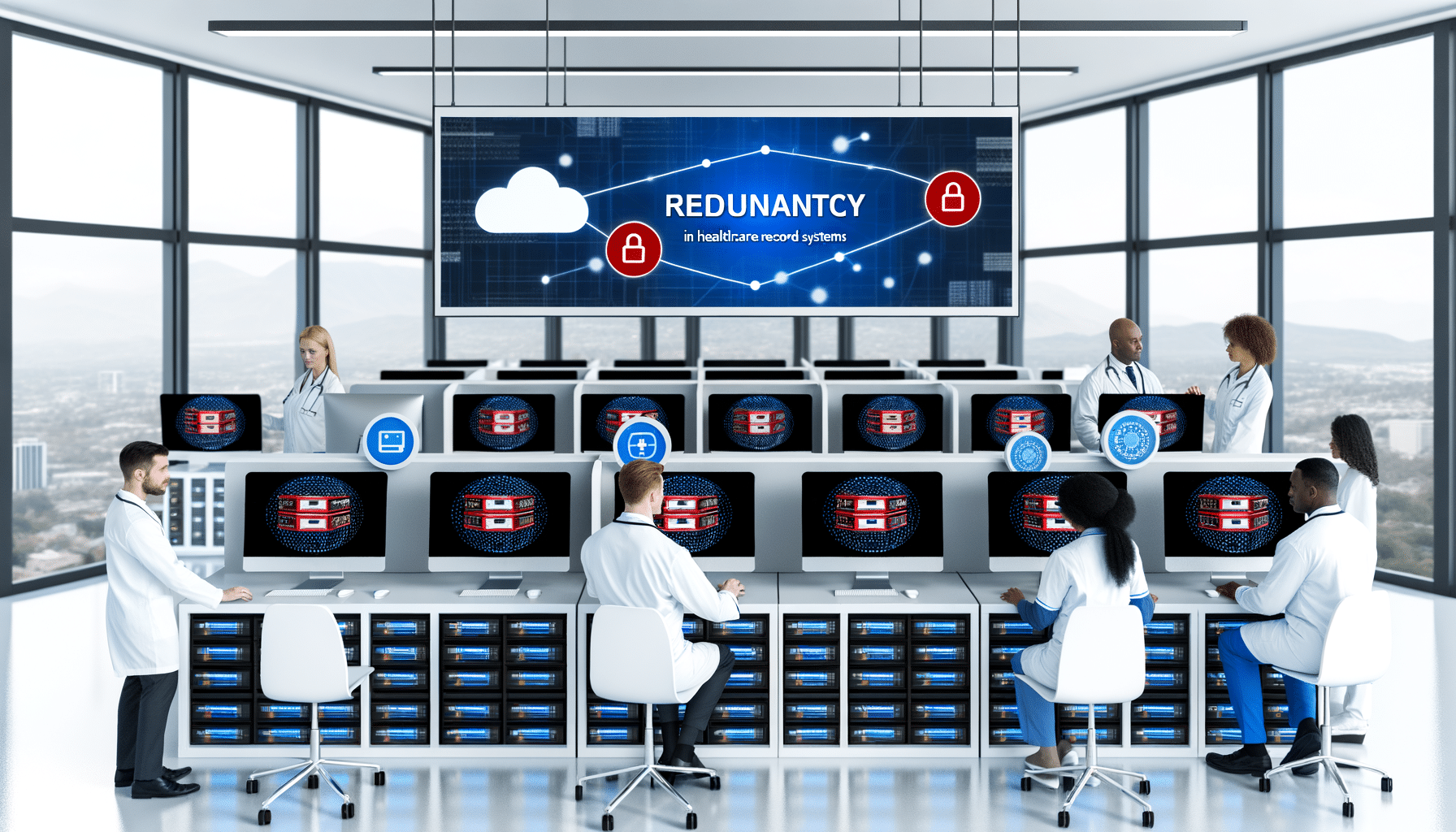- Data Redundancy
- December 18, 2023
The Importance of Redundancy in Healthcare Record Systems

Ensuring Reliability and Security in Healthcare Records through Redundancy
In the fast-paced world of healthcare, where data integrity and reliability are paramount, redundancy plays a critical role. It’s a lesson I’ve learned first-hand in my journey developing innovative solutions like RecordsKeeper.AI. A robust redundancy system is not just an optional feature in healthcare records management—it’s a fundamental requirement that ensures records are secure, accurate, and available when needed most.
Why Redundancy Matters in Healthcare Records
In healthcare, the loss or inaccessibility of records can have dire consequences. As these records contain vital patient information, even a minor error or delay can affect patient care. Implementing redundancy means creating multiple instances or backups of the same data, ensuring that if one version is compromised, another is available to seamlessly take its place.
Redundancy bolsters the resilience of healthcare systems by:
- Preventing Data Loss: In the event of hardware failure, cyber-attacks, or natural disasters, redundancy ensures that data is not permanently lost.
- Enhancing System Uptime: Multiple data sources prevent downtime, allowing healthcare providers uninterrupted access to critical patient information.
- Maintaining Data Integrity: Regularly updated backups guarantee that all relevant data stays current and accurate, essential for informed medical decisions.
Designing Healthcare Systems with Built-In Redundancy
When designing a healthcare record system, consider these key aspects to embed redundancy into the architecture:
1. Dual Data Centres
Using geographically diverse data centers ensures that even if one location is compromised due to a local event, another can maintain functionality. This setup is particularly effective against natural calamities or localized power outages.
2. Regular Backups
Routine data backups to offsite locations bolster security and reliability. By automating these processes, healthcare facilities can reduce human error while ensuring that backups are always up-to-date.
3. Blockchain for Immutable Records
Integrating blockchain technology further enhances data integrity by providing a tamper-proof system for storing critical records. At RecordsKeeper.AI, I’ve witnessed blockchain’s transformative effect on maintaining verifiable records without risk of unauthorized changes.
4. Real-Time Data Synchronization
Implement systems that synchronize data in real-time. This ensures all copies of records are updated instantaneously, thereby reducing conflicts between multiple records and maintaining accuracy.
The Human Element in Redundancy Strategy
While technology forms the backbone of redundancy, human management is vital in overseeing these systems. Staff should be trained efficiently to handle redundancy mechanisms, with regular drills conducted to simulate data retrieval operations in crisis scenarios. This preparedness minimizes panic during real events and allows for swift recovery.
Regulatory Compliance: A Redundant Approach to Security
Regulations like HIPAA in the United States emphasize the need for secure handling of healthcare records. Incorporating redundancy into compliance strategies is not only prudent for protection but also a requirement for adhering to these stringent regulations.
Automating compliance management through platforms such as RecordsKeeper.AI can streamline this process. Systems that automatically manage data in accordance with GDPR, HIPAA, and similar regulations ensure not only compliance but also enhance the robustness of data security through redundancy.
Implementing Redundancy with RecordsKeeper.AI
At RecordsKeeper.AI, my commitment to enhancing record management extends to ensuring our platform is engineered to exemplify best practices in redundancy. Our solutions automate categorization, improve data retrieval, and ensure compliance—undertaken with the added reliability provided by redundant systems.
Incorporating AI and blockchain only heightens our ability to maintain secure and compliant solutions, allowing healthcare providers and institutions to focus on what truly matters: patient care.
Conclusion: Taking Redundancy Seriously in Healthcare
Redundancy in healthcare records is more than an operational tactic; it’s a strategic asset that promotes unwavering reliability and security in critical times. By prioritizing redundancy, healthcare providers can protect their systems from unforeseen disruptions, safeguarding patient data and trust.
As we navigate an increasingly data-driven age, I encourage you to explore how robust redundancy strategies, along with innovative solutions like RecordsKeeper.AI, can revolutionize your healthcare record systems. Join me on this journey, and let’s redefine what it means to be secure in the world of digital healthcare records.
Toshendra Sharma is the visionary founder and CEO of RecordsKeeper.AI, spearheading the fusion of AI and blockchain to redefine enterprise record management. With a groundbreaking approach to solving complex business challenges, Toshendra combines deep expertise in blockchain and artificial intelligence with an acute understanding of enterprise compliance and security needs.
Archives
- January 2025
- December 2024
- November 2024
- October 2024
- September 2024
- August 2024
- July 2024
- June 2024
- May 2024
- April 2024
- March 2024
- February 2024
- January 2024
- December 2023
- November 2023
- October 2023
- September 2023
- August 2023
- July 2023
- June 2023
- May 2023
- April 2023
- March 2023
- February 2023
- January 2023
- December 2022
- November 2022
- October 2022
- September 2022
Want to get more content like this?
Signup to directly get this type of content to your inbox!!
Latest Post
Document Control for Equipment Maintenance
- January 20, 2025
Managing Records for Multiple Clients
- January 19, 2025
Handling Conference Documentation
- January 18, 2025
Setting Up Department Record Reviews
- January 17, 2025





